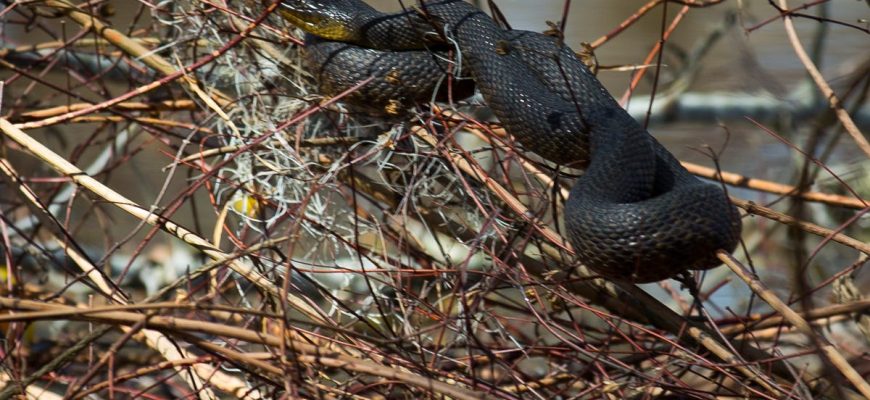
The Shreveport Times
To subscribe to The Times go to https://help.shreveporttimes.com/subscription-services
Henrietta Wildsmith, Shreveport Times
It is warming up here in Louisiana, and with those rising temperatures come snakes.
The Louisiana Wildlife and Fisheries Department has listed 43 species of snakes that commonly inhabit Louisiana. Of those 43 snakes, six are venomous.
These weird laws in Louisiana may surprise you
Eastern Copperhead
The scientific name for this snake is agkistrodon contortrix. These snakes are venomous and are usually 14 to 45 inches long. Often known for their beige coloring with broad darker brown hourglass-shaped crossbands.
These snakes are typically found throughout wooded and forested areas and are not aggressive but pose danger because they camouflage in these areas.
They are active in the early morning and evening hours, eating frogs, cicadas and rodents.
Eastern Diamond-back Rattlesnake
The scientific name for this snake is crotalus adamanteus. These snakes are venomous and are usually large, ranging from 29 to 90 inches long. Often known for their brown or tan coloring with dark brown diamond-shaped markings.
These snakes are typically found in open pinelands and rely on camouflage to avoid detection but will coil, rattle and strike if threatened.
Diamond-back rattlesnakes will feed on small rabbits and large rodents.
Harlequin Coralsnake
The scientific name for this snake is micrurus fulvius. These snakes are venomous and are usually a medium-sized snake, ranging from 15 to 36 inches long.
Harlequin Coralsnakes are described as appearing to have a series of wide black and red rings, which are separated by narrow yellow rings that encircle the body. Their snouts are black, with the back of their head yellow.
These snakes inhabit dry, wooded areas, especially pinelands and mixed forests.
Harlequin coralsnakes are secretive and are rarely seen. They forage in leaf litter during the day and evening but remain hidden. They do not strike, but if held can unexpectedly bite.
These snakes will feed on lizards, small snakes and some rodents.
Are two Northwest Louisiana lakes infested with alligators?
Northern Cottonmouth
The scientific name for this snake is agkistrodon piscivorus. These snakes are venomous and are usually medium snakes ranging from 15 to 55 inches long.
These snakes are dark tan, brown or nearly black, with a vague black or dark brown crossbands.
Northern Cottonmouths are typically found throughout Louisiana near swamplands, ponds, lakes and stream borders. They often remain coiled near water in dense canopies.
Cottonmouths are very defensive and upon provocation will coil and open their mouths to expose the white lining and shake their tails.
These snakes feed on fish, frogs, water snakes and small mammals.
Pygmy Rattlesnake
The scientific name for this snake is sistrurus miliarius. These snakes are venomous and are usually small snakes ranging from 10 to 20 inches long.
These snakes are pale gray or tan with a row of dark blotches or spots down their backs. They have a reddish or orange band down the middle of their back.
Pygmy rattlesnakes are typically found in upland areas and pine flatwoods. Wildlife and Fisheries said that they are found in wooded areas but tend to avoid swamps.
These snakes feed on frogs, other snakes and lizards.
Timber Rattlesnake
The scientific name for this snake is crotalus horridus. These snakes are venomous and are usually large snakes ranging from 25 to 70 inches long.
These snakes are light tan or beige above with dark brown crossbands and a reddish stripe down the middle of the back with a brown band from eye to angle of mouth.
Timber rattlesnakes are typically found in wooded and forested areas. They tend to lie motionless in a resting coil, usually near logs, tree bases or in thickets.
These snakes feed on rodents, specifically wood rats and squirrels.
A toxic, carnivorous and nearly immortal worm is invading Louisiana. Is it dangerous?
Makenzie Boucher is a reporter with the Shreveport Times. Contact her at mboucher@gannett.com.








